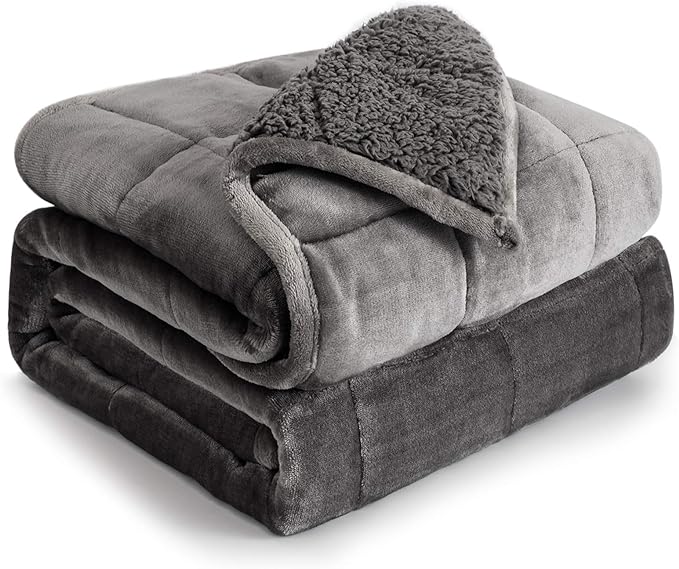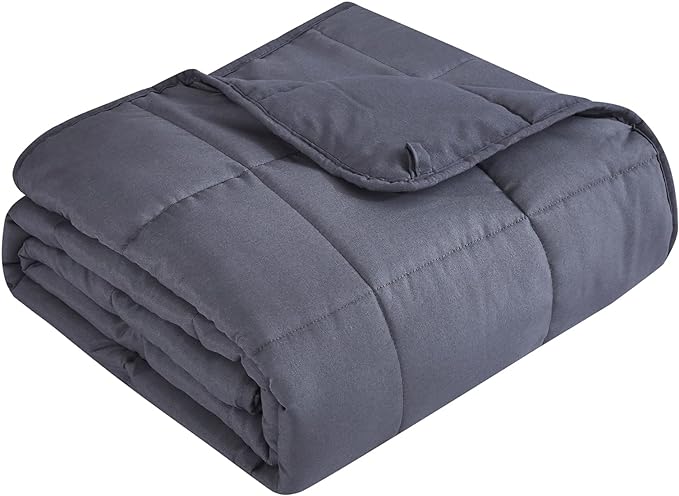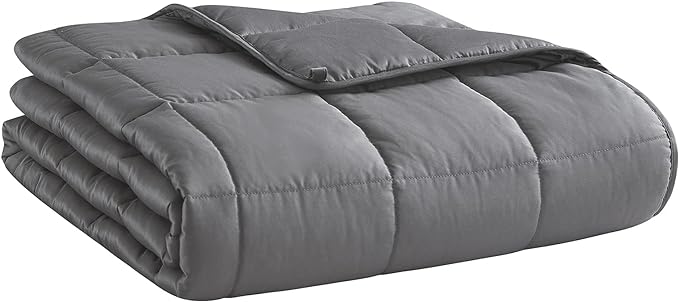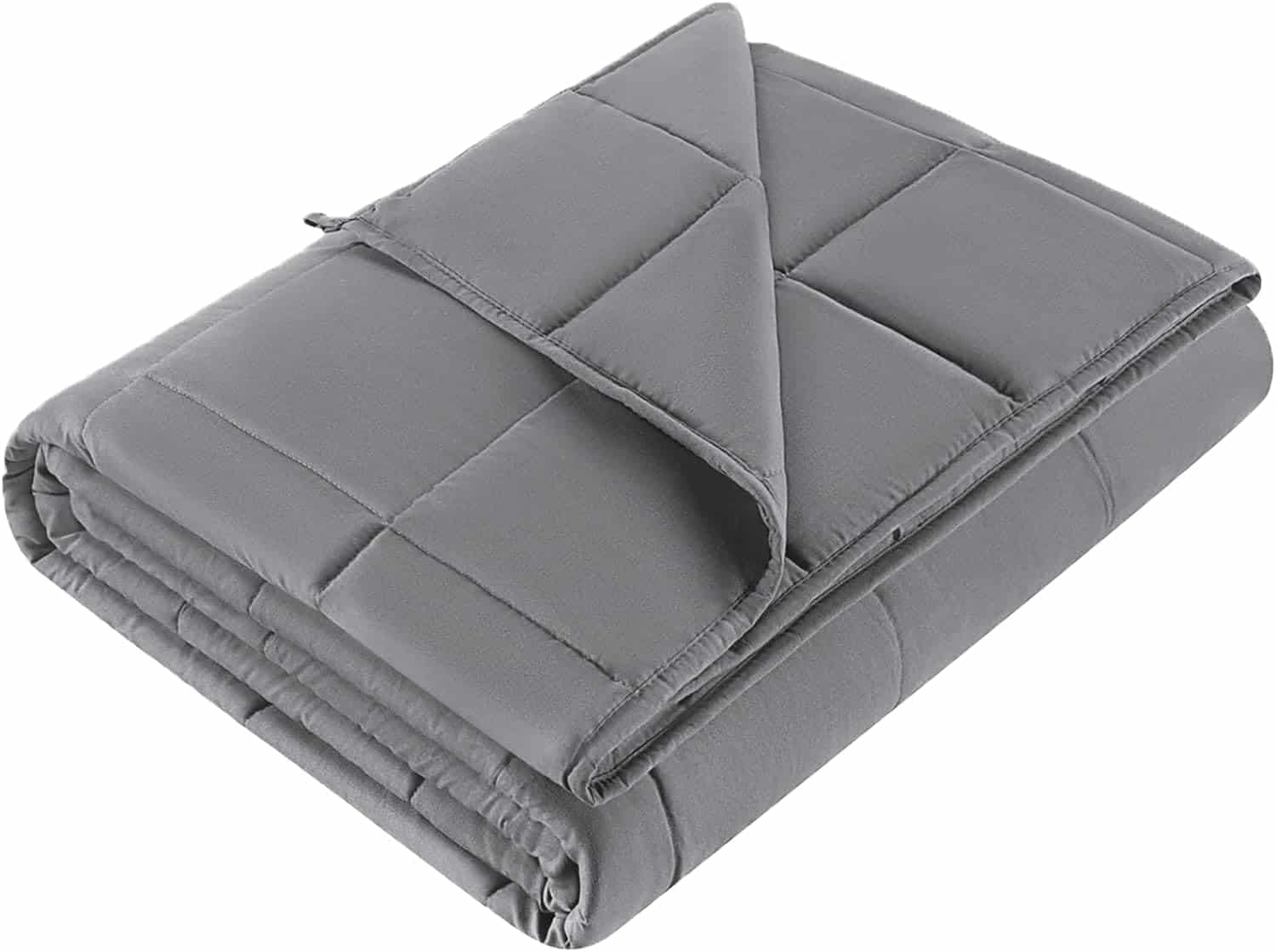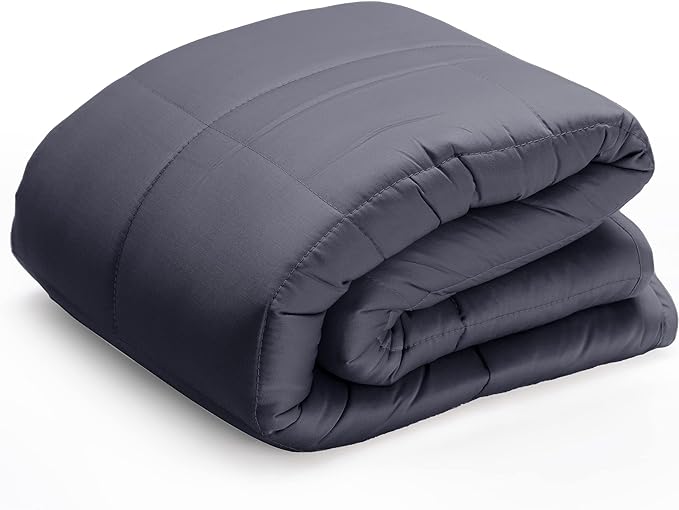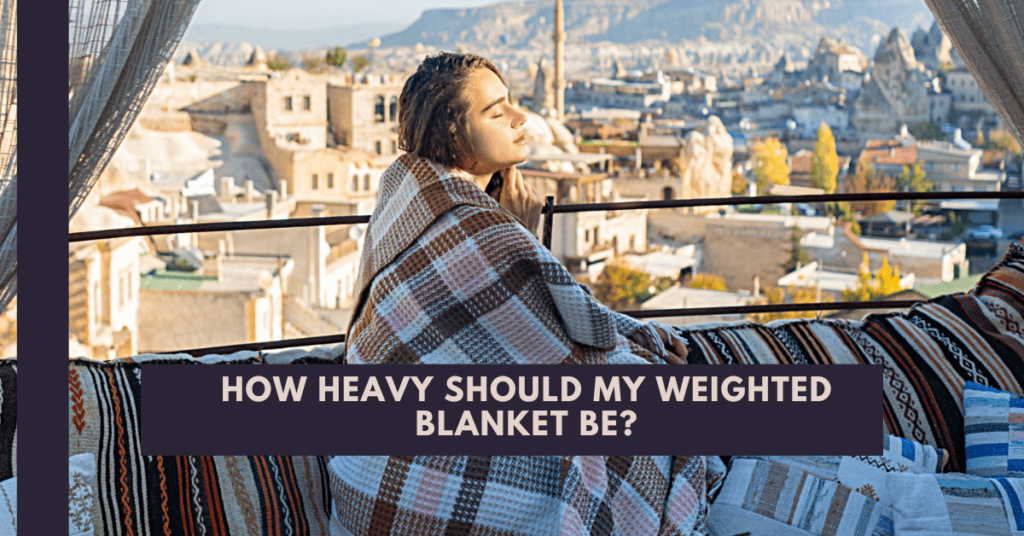
Weighted blankets have become a cornerstone in the toolkit for improving sleep and reducing anxiety. The key question, however, remains central: How heavy should my weighted blanket be to provide the optimal benefits?
Contents
- 0.0.0.1 Understanding Weighted Blankets
- 0.0.0.2 The 10% Rule
- 0.0.0.3 Personal Preference and Comfort
- 0.0.0.4 Special Considerations for Different Users
- 0.0.0.5 Weight Distribution Matters
- 0.0.0.6 Material and Construction Quality
- 0.0.0.7 Trial and Error
- 0.0.0.8 Consultation with Healthcare Professionals
- 0.0.0.9 Adapting to Your Weighted Blanket
- 0.0.0.10 Maintenance and Longevity
- 0.0.0.11 Conclusion
- 1 Our Top Picks
Understanding Weighted Blankets
A weighted blanket, by design, is heavier than your standard blanket. Filled with materials like fine-grade glass beads or plastic pellets, these blankets provide Deep Pressure Stimulation (DPS). DPS mimics the feeling of being held or hugged, promoting a sense of security and relaxation. This sensation helps in reducing cortisol levels (the stress hormone) and boosting serotonin (the happiness hormone), thereby enhancing sleep quality and reducing anxiety.
The 10% Rule
The most commonly cited guideline for selecting the weight of your blanket is the 10% rule. This means choosing a blanket that weighs around 10% of your body weight. For example, a person weighing 150 pounds might find a 15-pound blanket ideal. This rule is based on providing enough weight for therapeutic benefits while ensuring comfort and safety.
Personal Preference and Comfort
It’s important to remember that the 10% rule isn’t one-size-fits-all. Comfort and personal preference play a significant role. Some might prefer a bit more weight for additional pressure, while others might find a lighter touch more comforting. The key is to choose a weight that feels comfortably heavy without being overwhelming.
Special Considerations for Different Users
Children, the elderly, or individuals with certain health conditions should approach weighted blankets with additional care. Children should use a blanket that is around 10% of their body weight plus one or two pounds. For the elderly or those with conditions like arthritis, osteoporosis, or limited physical strength, a lighter blanket is advisable to prevent discomfort or restricted movement. “Are weighted blankets suitable for children?”
Weight Distribution Matters
The effectiveness of a weighted blanket also depends on how the weight is distributed. A well-designed blanket should have evenly distributed weight to provide uniform pressure across the body. This helps in maximizing the therapeutic benefits and ensures that no single area feels excessively pressured.
Material and Construction Quality
A blanket’s fabric and build quality can influence its perceived weight. Breathable materials like cotton are preferable for a cooler sleep, while minky or fleece offer more warmth. The quality of stitching and the even distribution of the weighted fillers also contribute to the overall comfort and durability of the blanket.
Trial and Error
Finding the right weighted blanket often requires experimentation. Many manufacturers offer trial periods, allowing you to return the blanket if it doesn’t meet your needs. This trial-and-error process is essential in finding the most comfortable weight for your needs. ” Choosing the right weighted blanket: A buyer’s guide”
Consultation with Healthcare Professionals
If you’re considering a weighted blanket for therapeutic reasons, such as managing anxiety, PTSD, or sensory processing disorders, consulting with a healthcare professional is advisable. They can provide personalized guidance based on your health history and specific needs.
Adapting to Your Weighted Blanket
Once you’ve chosen your weighted blanket, give yourself time to adapt to it. Initially, the extra weight may feel different, but most people acclimate quickly, often within a few nights. If the blanket still doesn’t feel right after a trial period, don’t hesitate to try a different weight.
Maintenance and Longevity
Maintaining your weighted blanket is crucial for its longevity. Follow the manufacturer’s care instructions closely. Most weighted blankets come with a removable cover for easy washing. Regular cleaning and proper storage will ensure your blanket remains in good condition, providing comfort for years.
Conclusion
In conclusion, choosing the right weighted blanket involves a blend of the 10% guideline, personal preference, and special considerations for your unique needs. The goal is to find a blanket that feels like a comforting embrace, enhancing your relaxation and sleep quality. With careful selection and a bit of trial and error, your weighted blanket can become a cherished part of your nightly routine, offering a peaceful and restful night’s sleep.
Our Top Picks
For more information about the best weighted blankets you can find on the following page: The 6 Best Weighted Blankets Reviewed – Buying Guide# | Product | Title | Rating | |
1 | 4.5/5 | |||
2 | 4.5/5 | |||
3 | 4/5 | |||
4 | 4/5 | |||
5 | 4/5 | |||
6 | 4.5/5 |

